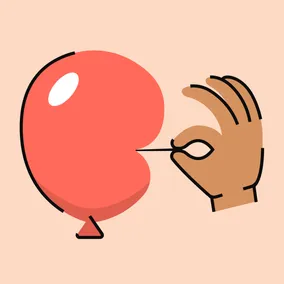How We’ve Avoided UX Disillusionment

Curt Arledge, Former Director of UX Strategy
Article Categories:
Posted on
The industry is changing, but the promise of UX is alive and well at Viget. Here's how we did it.
This year, I’ve noticed an uptick in veteran UX professionals lamenting the state of the practice. Mark Hurst wrote about “losing faith in UX.” Jesse James Garrett tweeted in March, “I don’t think I know anyone that’s been in UX more than a decade who’s happy with how it’s going,” a notion he elaborated on his podcast and his recent piece in Fast Company.
The gist of his argument is that “UX” no longer implies the kind of strategic, exploratory, and insight-driven practice that it once did (or aspired to, at least). The proliferation of bootcamps and in-house roles has coincided with a reframing of UX as “product design,” a role that emphasizes consistent, efficient production of high-fidelity UI designs and leaves out the kind of research-driven investigation that uncovers new business value.
To me, this diagnosis rings true of a trend I’ve seen in job applicants, conference programming, and social media discourse. There is clearly a high demand for product designers, and a lot of talent required to do that job well, but folks who started in UX before the mid-to-late-2010s can be forgiven for feeling like something important has been lost.
It bums me out that my professional heroes like JJG have reason to feel disillusioned. But at the same time, I can’t help but feel grateful that at Viget, UX hasn’t lost its luster. I don’t say this (solely) to promote the UX team at Viget (but we’re hiring!), but I believe that we’ve maintained the integrity of our UX practice in the face of a changing industry. I’ve thought about why this might be, and here are three possible reasons:
First, we’re an agency. Jorge Arango suggests that UX disillusionment might be correlated with the shift to an increasing proportion of UX roles happening in-house. I think there is probably some truth to that. At places like Viget, we can staff projects with multiple designers of multiple types; we don’t need to pretend that every designer is a unicorn who can excel at everything from research to IA to high-fidelity comps. Moreover, clients often come to us to help lead a major overhaul, and that requires more strategic, big-picture thinking than designing or iterating a single product feature. For all the reasons Jorge mentions, agencies are a better place for the kinds of innovation and, yes, thought leadership that keep us from turning our design practice into a monoculture.
Second, our product designers are steeped in foundational UX. Our product design practice emerged from our UX team a few years ago, and most of the team practiced for years as UX designers before making the transition. Our product designers are Figma wizards with the chops to create complex, polished design systems for fast-moving projects like a state COVID vaccination platform, but the teams they work on are also highly multidisciplinary and empowered to ask our clients big, hard questions. Again, because we aren’t restricted to a one-size-fits-all approach to hiring and staffing designers, our project teams include a mix of designers, researchers, and strategists collaborating tightly.
Third, we’ve revamped our UX practice as UX Strategy. The emergence of product design at Viget helped clarify the strategic value that our UXers bring to projects, so we decided to make it official with the title of UX Strategist. All UX Strategists are expected to be researchers, analysts, information architects, and sensemaking specialists. We’re still designers, but we’re designing for understanding and alignment and explicitly not production. Our UX Strategy team is also a home for content strategists and product strategists, giving these roles the chance to learn from each other within a single team while advancing their own specialized subdisciplines.
If you’ve got thoughts about the trend of UX malaise and how you’ve inoculated (or not) your UX team against it, I’d love to hear from you on Twitter (@curtarledge) or in a comment below. If you’re intrigued, consider checking out our job postings for UX Strategist and Product Designer.